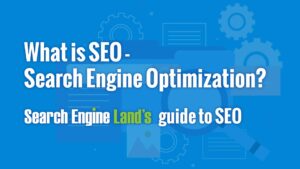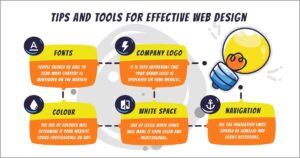Search engine optimization (SEO) is an integral part of any successful digital marketing strategy. It is essential to understand the five elements of SEO so you can ensure your website is optimized for maximum visibility in search engine results. In this article, we will discuss the five elements of SEO and how each one can benefit your website’s performance. We will explain why it’s important to include these elements within your website design and how they work together to create an effective SEO strategy.
Element #1: Keywords
When it comes to SEO (Search Engine Optimization), keywords are the most important element. Keywords are words and phrases that directly relate to your content, allowing the search engine to easily determine what your website is about. Knowing how to effectively select and use keywords will help you move up in the ranks of search engine results pages (SERPs).
The best way to choose keywords is by understanding your target audience and their needs; this will allow you to choose words and phrases that closely match what they’re looking for. Once you have identified relevant keywords, make sure they are incorporated into all types of content on your website – titles, headings, body copy, etc. This helps search engines quickly understand what topics each page relates to, so they can serve more accurate results when someone searches for related terms.
Element #2: Content
Content is a key element of any successful SEO strategy. Content includes the words used on your website, blog posts, and other web pages that help you rank higher in search engine results. Quality content is essential for providing readers with useful information and drawing their attention to your site. It should be thoughtful, well-researched, relevant to your audience, and optimized for search engines.
Good content also encourages visitors to stay longer on your page and interact with it – both of which help to boost rankings in search engine algorithms. Additionally, high-quality content should include internal links pointing to other pages on the website; this helps Google recognize your website as an authoritative source of information about a particular topic. Finally, keyword research should be conducted before writing content so that the most relevant terms are included in the text naturally.
Element #3: Links
Links are connections between two web pages. Linking from one page to another can help search engine crawlers index pages more quickly and accurately, which in turn can increase search engine rankings. Internal links are those that point to other pages within the same website while external links link to an entirely different website. In addition to aiding in search engine rankings, internal links also make it easier for users to navigate a website and find the information they need more easily. External links provide potential customers with additional resources, creating trust and credibility for your business or organization. It’s important to ensure that all links are relevant and up-to-date; broken or outdated links will not only make it difficult for users but also hurt websites’ overall search engine rankings.
Element #4: Technical SEO
Technical SEO is where website owners and developers can have an impact on the visibility of their content within search engines. This type of optimization is all about ensuring that your website is configured correctly so that it communicates with search engine crawlers in a way that results in improved rankings.
Technical SEO involves optimizing HTML tags such as title tags, meta descriptions, and header tags; setting up 301 redirects to ensure visitors reach their intended destination when they click on a link, and making sure your URLs are properly structured for optimal usability and crawlability. Additionally, testing page speed and mobile-friendliness will help ensure you’re providing users with a great experience no matter which device they’re using to access your content.
Element #5: User Experience
User experience design focuses on creating enjoyable and efficient interactions between a company’s website and its users. This includes making sure the site is aesthetically pleasing, easy to navigate, and provides an overall positive experience for visitors. The user experience will have an impact on how well a website performs in search engine rankings since it plays a major role in the number of visitors returning to the site.
To ensure users are retained, companies must pay special attention to the details that make up their websites’ user experiences, such as page speed, content layout, and obvious call-to-action buttons. Additionally, businesses should be sure to always create new content that reflects what their customers want or need as this can also help improve their search engine rankings.
Conclusion
The conclusion of the article “What are the 5 SEO elements?” is that SEO benefits can be numerous and varied. SEO, or Search Engine Optimization, is a series of techniques used to drive more organic traffic to a website. Implementing proper SEO practices helps to ensure that your website is ranked higher in search engine results pages (SERPs). This increased visibility leads to more brand recognition and trust from customers, thus increasing conversions and sales. Additionally, SEO can help improve user experience on your site by making it easier for visitors to find the information they are looking for.
Overall, there are many advantages associated with using SEO correctly in order to optimize your website. Not only does this lead to improved customer relations and conversions, but it also helps create an overall positive reputation for your business.






Be First to Comment